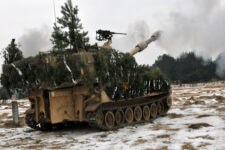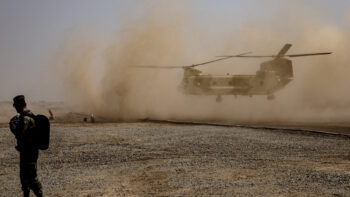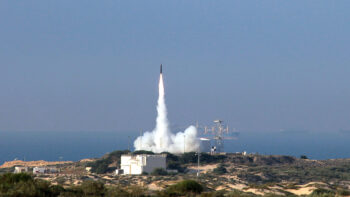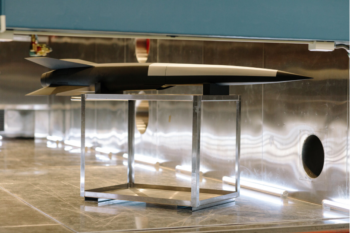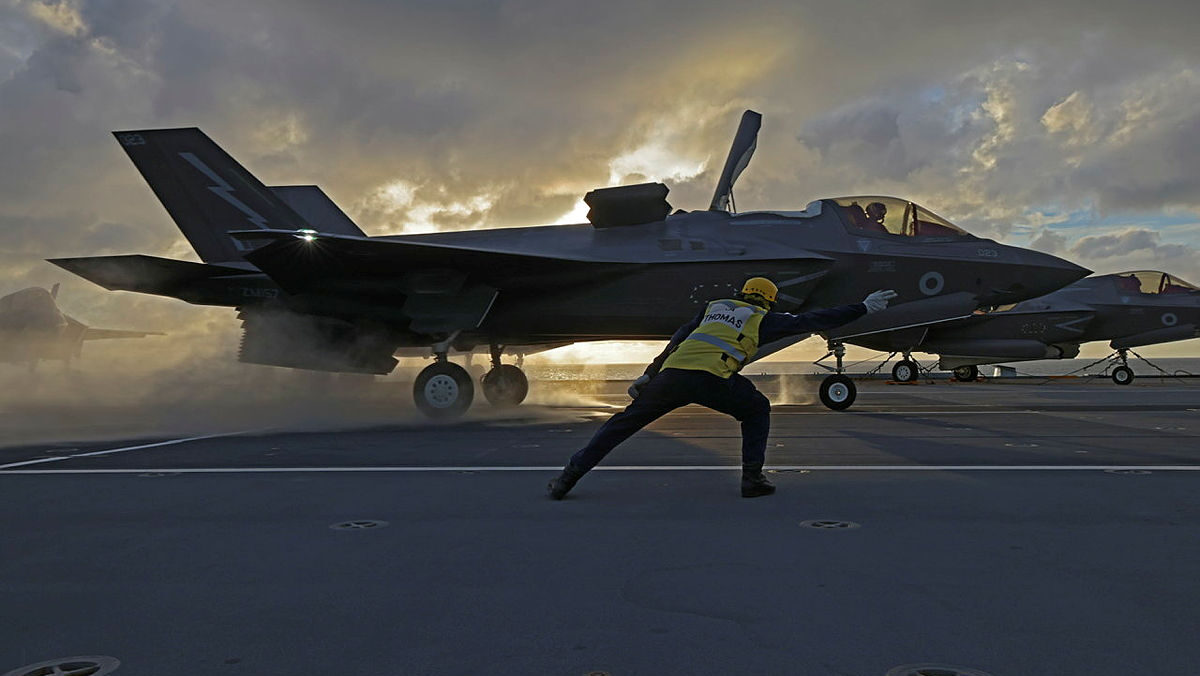
F-35B fighter jets from the UK Carrier Strike Group launch from the HMS Queen Elizabeth aircraft carrier to undertake sorties under NATO command in the Atlantic (UK MoD)
BELFAST — The United Kingom announced today it intends to increase its defense spending by £2.9 billion ($3.8 billion) next year, according to a newly released budget.
Rachel Reeves, the UK Chancellor, shared the uplift with lawmakers in a parliamentary speech, though she said that a Labour Party election manifesto commitment of reaching 2.5 percent GDP on defense spending will be met at a “future fiscal event.”
“I am announcing a total increase to the Ministry of Defence’s budget of £2.9 billion next year, ensuring that the UK comfortably exceeds our NATO commitments and providing guaranteed military support to Ukraine of £3 billion per year for as long as it takes,” added Reeves.
Across the 2023 to 2024 fiscal year, London spent £54 billion on defense, according to government figures, tracking at around 2.33 percent GDP and to date has pledged £12.8 billion to Kyiv for military, economic and humanitarian aid.
Earlier this month, the UK also announced a new £2.3 billion loan for Ukraine, funded by frozen Russian assets.
A supporting Autumn Budget 2024 document [PDF] says that the new funding, approved by Reeves, will allow UK armed forces to “modernise” and sustain Britain’s “leading role in NATO, including through the nuclear deterrent, combat and surveillance aircraft, surface and submarine fleets, forward land forces, Special Forces and cyber and space capabilities.”
Experts have long questioned the ability of the UK to meet its NATO commitments, especially with respect to the British Army delivering a Strategic Reserve Corps, made up of two divisions and additional corps echelon troops.
“The current British Army actually fields half of one heavy brigade’s worth of equipment, split between two, and one regiment of artillery,” Jack Watling, senior research fellow for land warfare at RUSI, wrote in a July analysis.
The decline in size and capability of the force in its current state falls far short of a 2015 effort to deliver a “warfighting division of two heavy and between one and two medium combat brigades, an artillery brigade, an engineering brigade, an air defence group, a logistic brigade and an ISR brigade,” he noted.
Patrick Sanders, former head of the British Army, also admitted that UK aid to Ukraine in the form of warfighting platforms, amounting to 14 Challenger 2 main battle attacks and 30 AS90 155mm self-propelled guns, would “leave us temporarily weaker as an army.”
As for increasing spending further, before losing office, the Conservative government had committed to hitting the 2.5 percent GDP target by the end of the decade, which would have resulted in a 2030 annual defense budget of £87 billion, but Labour has still to put forward an exact timeframe for making good on the same GDP pledge.
The new government has launched the Strategic Defence Review (SDR), set to report in mid-2025, “in recognition of the urgency of the threats” it faces and designed to assess national defense priorities and policy.
Chief among the threats sits Russia, conflicts and increasing instability in the Middle East and an assertive China in the Indo-Pacific.
Though equipment planning remains in limbo until the SDR is published, financial challenges persist, largely owing to a £43 billion, 10-year spending plan deficit, according to figures [PDF] from the National Audit Office, a government watchdog.
Israel likely partner for Greece as it looks for integrated air defense systems
A pair of sources told Breaking Defense that Greece is in the fact-finding process of what systems Israeli might be willing to sell, as Athens looks for multi-layered air defense options.












